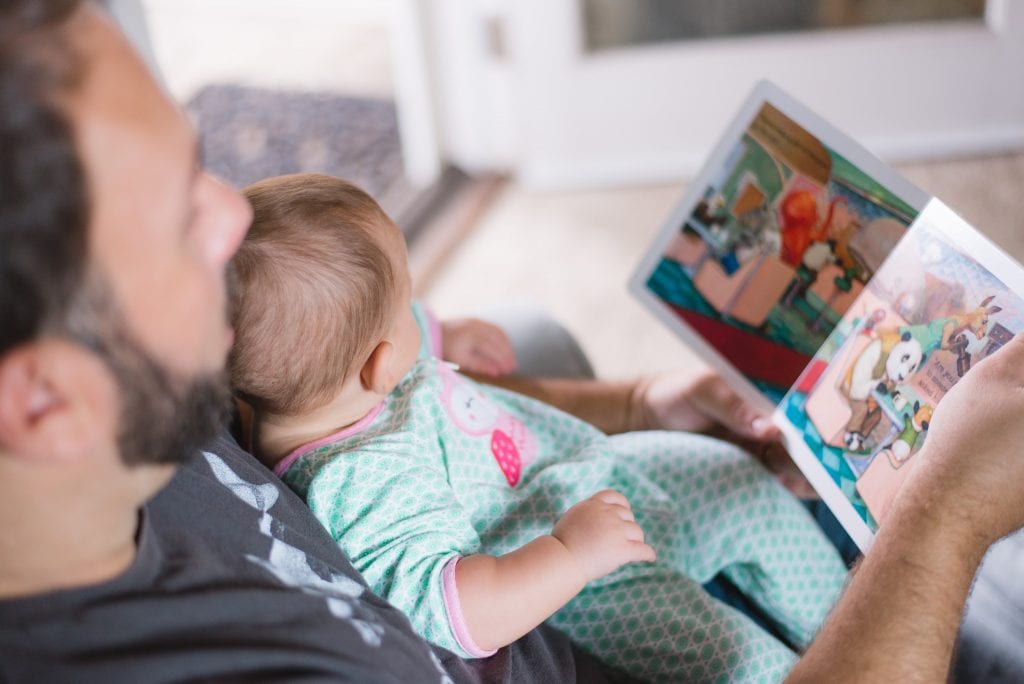
As the stressors of 2020 continue to increase – COVID-19, distance learning, an election and a brutal fire season – filling our children’s and our own need for a daily space of respite is vital.
In my September L.A. Parent article, I discussed how critical it is that children read during this time of educational disruption. Reading not only builds essential literacy skills but also provides emotional benefits. Reading for pleasure, of course, is important any time. But with children sitting in front of screens for the majority of the school day, it is more important than ever for them to spend a part of their day lost in the pages of a good book.
Sometimes a child needs to be led by the hand to discover the joys of reading. And even children who are already avid readers benefit from a daily shared reading ritual with a loving parent, grandparent or caregiver.
You may have read to your child when they were younger, then given it up when they began reading on their own. Or perhaps you never did read to your child and are wondering whether it’s too late. While it’s optimal to read to your child from the beginning and throughout their developmental stages, it is never too late to start. You’ll see positive changes in their attitude toward reading and an improvement in their schoolwork. You may even find your child becomes calmer and better able to focus.
If you’re wondering how to begin a daily read-aloud ritual – or how to begin again – here are some tips to maximize the chances that you’ll sustain the practice over time.
Tip #1: Choose a time that works for both of you. Bedtime is an ideal time for a read-aloud because your child is winding down and likely more ready to sit with you or on your lap. You may feel less burdened by your to-do list at the end of the day. Regardless of the time, be sure to put your phone away and focus exclusively on your child. Before long, this time of day will be an oasis that you both look forward to.
Tip #2: Choose a book to read that you’ll both enjoy. George Bernard Shaw famously said, “Make it a rule never to give a child a book you would not read yourself.” While his intent concerns encouraging children to read books of quality, there’s wisdom here when it comes to creating a family read-aloud ritual. For a daily habit to be sustainable, mutual enjoyment is necessary. Children know when we adults are simply going through the motions. If we actually like the story, they will feel it and enjoy it more, too, because it’s a shared experience.
(Note: This tip does not necessarily apply to very young children, who will demand to hear the same story over and over. These repeat readings may not be fun for you. They may drive you nearly over the edge at times, but this practice is necessary and important for your child. Rest assured, this stage will not last forever. See my book, “The Invisible Toolbox: The Power of Reading to Your Child from Birth to Adolescence,” for a comprehensive guide to reading aloud through all the developmental stages).
Discover great books to share by consulting your local children’s librarian, neighborhood bookseller, friends who read and online lists. My own book includes a curated list of don’t-miss books recommended by educators, children’s publishers, parents and grandparents.

Tip #3: Read the classics. There is much talk these days of abandoning the classics because they originated in a time that was less enlightened than our own. I disagree. Literature is one of the most powerful tools we have for understanding the history of our world and those who came before us. Mark Twain’s “The Adventures of Tom Sawyer” and “The Adventures of Huckleberry Finn,” for example, give the reader a historical understanding of the injustice of slavery – and a visceral one as well. A shared reading provides an opportunity for parent and child to discuss and understand history in a way that will likely make a greater impression on the child than simply reading an explanation of slavery in a history book would.
Reading the classics has other benefits, too. Books become classics because they deal with universal themes that people across all cultures, ethnicities, time periods and ages can relate to. This is one of the reasons they make wonderful choices for reading aloud. You, as a parent, will find yourself stimulated to think and feel and be entertained by a classic just as your child will.
The language of the classics is richer than that of most books published for children today. One of the greatest byproducts of reading aloud to your child is the vocabulary they will gain. The classics expose your child to a far greater breadth of words than they would ever come across in their daily experience. They won’t hear these words in everyday speech, nor in the movies or television shows they watch, nor in the contemporary books they read. Because a child’s vocabulary is the greatest predictor of school success, you do them a huge favor when you share a book rich in language.
Finally, the classics are an outstanding choice if your family read-aloud ritual involves children of various ages. You may be amazed at how much even a young child can understand through listening to a story that is beyond their current reading level. A child’s developmental stage will determine how deeply they comprehend a classic, which can be appreciated on many levels, but it will not prevent them from enjoying and benefiting from the story.
Tip #4: Read books that feature characters your child can relate to. It’s important that children experience stories that involve characters they can identify with and aspire to emulate. The children’s book publishing industry has worked hard in recent years to publish books that all children can see themselves in. Google “children’s books and diversity” and you’ll find lots of choices.
Tip #5: Engage your child by encouraging them to discuss their thoughts and feelings as you read. Knowing that the person they love most in the world cares about what they think and feel validates a child’s sense of worth. This will have far-reaching effects on the way they behave in the world. Children whose thoughts and feelings are supported at home gain the confidence to trust themselves and believe that their feelings and opinions matter. This self-confidence increases the likelihood that a child will feel comfortable expressing their thoughts and opinions in arenas outside their home.
While we often face a certain amount of inertia around starting a new habit (even one as pleasant as a reading ritual), it’s worth the initial effort. You’ll soon find that this time cuddling up with your child and a good book becomes the sweet spot of your day. You’ll both look forward to it. Together, you’ll let go of the cares of the day and disappear into another world for a time. The memories you create and the impact on the mind and heart of your child will help carry you through this trying moment and last a lifetime.
Kim Jocelyn Dickson is a parent, teacher and the author of “The Invisible Toolbox: The Power of Reading to Your Child from Birth to Adolescence.” Learn more at theinvisibletoolbox.org or visit the author on Twitter @kimjdickson and Instagram @kimjocelyndickson




























